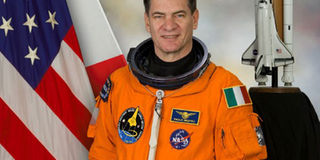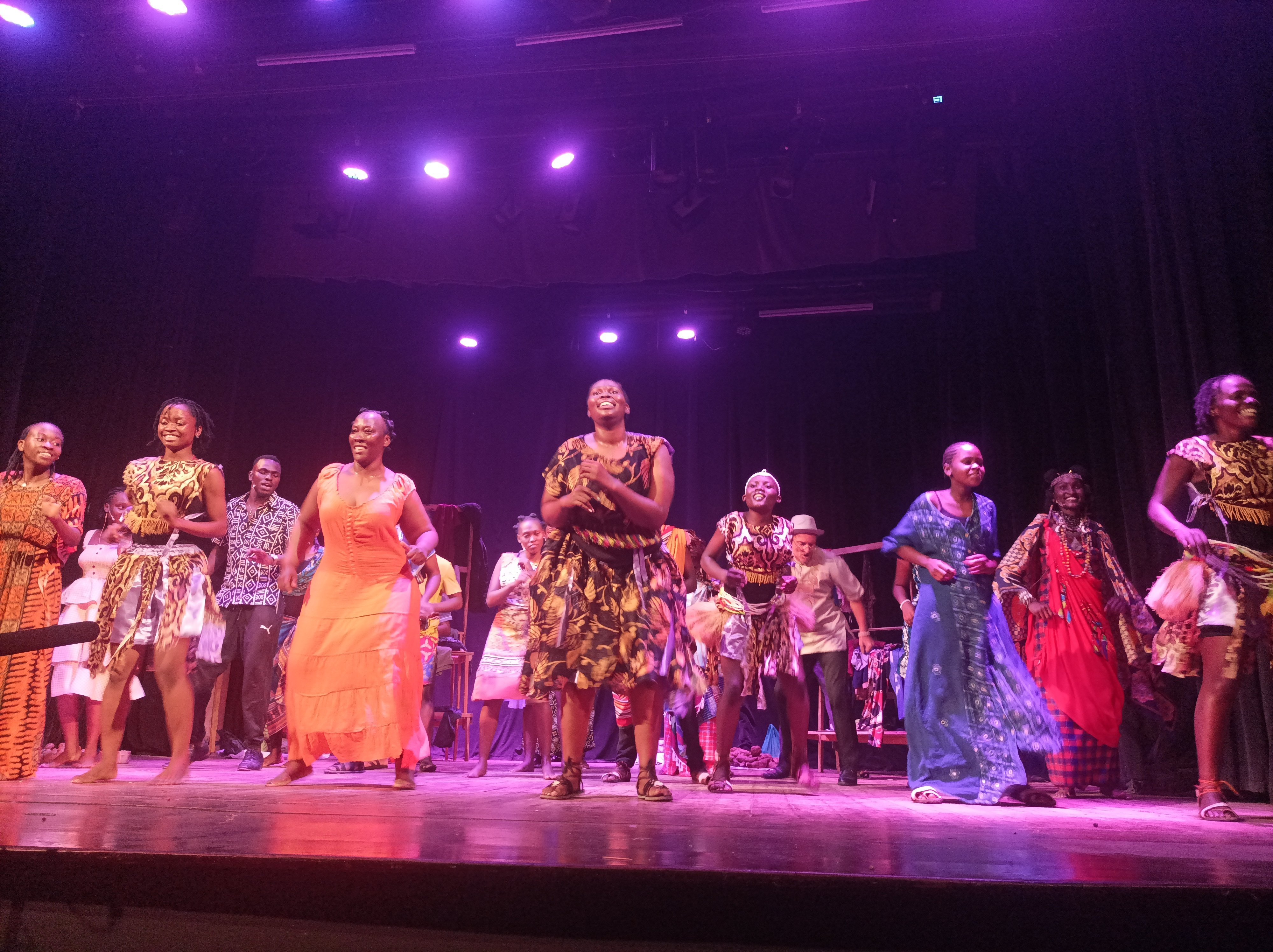Nespoli has been flying to space for 10 years

Last Thursday, while addressing the press, Nespoli said Africa has great potential of producing future astronauts. Photo by Godfrey Lugaaju
What you need to know:
- Born in Verano Brianza, in northern Italy, Nespoli, a husband and father of two, is European Space Agency’s (ESA) oldest active astronaut, flying three times to space since he started his lifetime dream of being an astronaut.
- He shares a story of humble beginnings that have seen him fly beyond earth.
If you are meeting an astronaut for the first time, it is hard to imagine they would be funny, free, down to earth or even able to tell a serious story of getting stuck in space with a touch of humour. Paolo Angelo Nespoli, 61, is one such astronaut.
“To you I might look important, but I come from a small little town in the middle of nowhere in Italy. As a child, I would say, ‘I will go in space’ and people would look at me and say, ‘it is not possible.’ By then, there were no Italians or Europeans in space, and there was no possibility of doing anything like that – but still, I had a dream,” Nespoli shares.
Gradually learning that he had to wake up and start working on his dream, he pursued a Bachelor’s degree in Aerospace engineering in 1988.
“Astronauts are recruited after their first degree from different academic fields and after a few years of working. Personally, I applied to the European Space Agency for recruitment three times before I was chosen,” he explains. After this, a training period between two to four years of learning the basics so that he can become an astronaut followed.
“After that, you then wait for an opportunity to fly into space, which is not easy. It took me nine years of waiting before flying in space for the first time,” he shares.
What astronauts do
“Astronauts are nuts about Astros/ space. Usually, they fly space crafts and today, our missions are mostly on the international space station, a multi-nation construction project that is the largest single structure humans ever put into space. We also mostly perform scientific experiments while there. Every once in a while, we fly there for missions that take days and sometimes, months,” Nespoli explains.
Some of the professions recruited are engineers, doctors, physicists, mathematicians, veterinarians, oceanographers and chemists. “We do not yet have lawyers, philosophers, journalists and the rest, and I think this is unfortunate. But in the future, it will change,” he notes, sharing his first experience flying in space.
“The first time I flew in space was in 2007 aboard the Space Shuttle Discovery as a mission specialist of STS-120,” he says. Though a short mission of just 15 days, Nespoli describes it as being a very complex mission – where they were to build part of the space station.
“We brought from earth an open module to add to the space station. We, however, had a major malfunction, which was kind of crazy. We had to do an emergency space walk and fix one of the huge solar panels on the station. If you have seen the movie Apollo13, that is exactly what happened with us. However, on ground, one of the young engineers came up with a solution which sounded impossible or one that could get us killed. But it was the only solution found, so we did it and 15 days later, we were back on earth,” he narrates.
His subsequent flights were in December 2010 aboard the Soyuz TMA-20 spacecraft as an Expedition 26/27 flight engineer and in July 2017 aboard Soyuz MS-05 which launched in for Expedition 52/53.
“These were longer, between four to six months in space. We became extra-terrestrial people - you have to train differently, move, think and live differently. It takes about a month and a half to get used and then you can work,” he says. Nespoli notes that one of the things space has taught him is that, as humans, we can do incredible things when we work together.
Why aerospace matters
When asked why any random Ugandan should care about aerospace, Nespoli enlightens that one cannot limit a human being from exploring.
“How do we for example know that when you eat this plant, you get well or when you eat this other plant you will die? It is because one person ate it and died. We need to know and understand what is around us and aerospace is our way of exploring,” he says.
He further mentions that as earth, we are just one grain of sand between all other grains of sand in the world.
“The space station for example has some conditions that we do not have here on earth. There is a lot of science that can be explored. The capability of satellite technology which gives us an opportunity to communicate, get television signals, connect to the internet, among others have come because we explored. Space has helped us live much better, and has enabled fields of medicine, education and infrastructure to develop,” Nespoli says.
What are Africa’s chances
Whereas the whole aerospace talk might seem a little detached from Africa, and Uganda, Nespoli emphasises that Uganda and Africa as a whole can play a pivotal role in this.
“Africa has the geographical advantage of having the equator cut across it, which is very important when it comes to space. We can have launch bases here in Africa. In fact, Italy has Luigi Broglio Space Centre, a launch base in Malindi, Kenya together with space agencies in Nigeria and South Africa,” he notes adding that Africa also has a lot of resources especially labour, and he emphasises the need for African countries to work together for a Pan African space agency.
“As an astronaut, I see this as just the beginning. If today we go to the moon, and to Mars, what are we going to be doing in a thousand years from now? Today, only professional astronauts go to space. In a few years, it will be possible for everyone to go in space,” an optimistic Nespoli says.
Visiting Uganda
Nespoli was visiting Uganda for the very first time to chair the panel of judges for the Dstv Eutelsat Star Awards competition last week - a continental competition that brings together high school students from different African countries to participate in essay writing and poster designing, as a way to exhibit their understanding of space and satellite technology.
“Some of these children come from nowhere. They may not have anything much, but they can write, or draw. So, the competition challenged them to rise to the opportunity – where winners get a trip to France to see a live rocket launch, and meet with people – a trip that might change the rest of their lives. I was here to raise awareness in science, technology, engineering and mathematics, which is a good way to focus student’s attention on technology,” he concludes.
About Nespoli
He has a master’s degree in Aeronautics and Astronautics from Polytechnic University in New York. He is a professional engineer, a pilot, an advanced scuba diver and a nitrox diver. Due to his military background, he is also a master parachutist, parachute instructor; jump master, high altitude low opening and Special Forces operator. He joined the Italian Army in 1977. He has received several awards including the 2007 NASA Spaceflight Medal, 2007 Commendatore Ordine al Merito della Repubblica Italiana, 2009 Cavaliere dell’Ordine della Stella della solidarietà italiana and the 2015 America Award of the Italy-USA Foundation.




